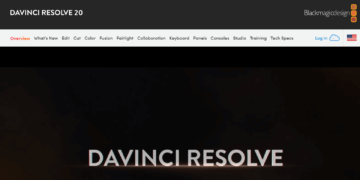In the world of productivity and efficiency, workflow automation tools are essential for streamlining tasks, reducing manual work, and connecting different apps and services. Among the most popular automation platforms are Zapier and Make (formerly Integromat). If you’re trying to decide which one is right for your needs, this Zapier vs Make comparison breaks down everything you need to know from features and pricing to usability and scalability.
Let’s dive into how these workflow automation tools stack up.
What Is Zapier?
Zapier is one of the most well-known no-code automation tools available today. It allows users to create automated workflows called “Zaps” that link different apps and trigger actions based on specific events.
For example, you can create a Zap that automatically saves Gmail attachments to Google Drive or posts new WordPress articles to your social media channels.
Key features of Zapier include:
-
Easy-to-use interface
-
Thousands of supported apps
-
Multi-step workflows
-
Built-in filters and delays
-
Task history and error logs
Zapier is often the go-to option for users who want a quick setup without the need to code or manage complex logic.
What Is Make (Formerly Integromat)?
Make is a powerful visual automation platform that enables users to design intricate, multi-step workflows using a drag-and-drop interface. While it supports similar automation capabilities to Zapier, Make gives you more granular control over each step of your process.
With Make, workflows called “scenarios” can include branching logic, data manipulation, custom API calls, and more. It’s built for users who want to go beyond basic triggers and actions.
Key features of Make include:
-
Visual scenario builder
-
Advanced logic and conditions
-
Built-in modules for complex tasks
-
API integration and HTTP calls
-
Real-time error handling and debugging
While Make is incredibly flexible, it comes with a steeper learning curve, making it ideal for more technical users or teams with automation experience.
Ease of Use
Zapier is widely praised for its user-friendly interface and simplicity. Its linear structure makes it easy for anyone especially beginners to build automation without confusion. You simply choose a trigger, add actions, and turn it on.
Make, on the other hand, offers a visual canvas where you build your automation scenarios. While this gives you more flexibility, it can be intimidating for those new to workflow automation tools. That said, once you understand the interface, it becomes a powerful and intuitive way to manage complex logic.
Winner: Zapier for beginners, Make for advanced users.
Features Comparison
Let’s break down some of the most important features in this Make vs Zapier comparison:
Feature |
Zapier |
Make |
|---|---|---|
Multi-step workflows |
Yes |
Yes |
Conditional logic |
Limited (in paid plans) |
Advanced (included in most plans) |
Data transformation |
Basic |
Advanced (formatting, calculations, etc.) |
Error handling |
Retry or task history |
Real-time notifications and recovery |
API/Webhooks |
Available |
More flexible and customizable |
Scheduling |
Built-in delay and schedule tools |
Fully customizable execution scheduling |
Integrations and App Support
Zapier currently supports over 6,000 apps, including major tools like Gmail, Slack, Trello, HubSpot, Shopify, and more. Its app directory is vast, and integrations are generally easy to configure.
Make supports over 1,500 apps. While the number is smaller, Make often offers deeper integration with each app, allowing you to access more specific functions and fields.
If app variety is your top priority, Zapier wins. If you need depth and advanced customization with fewer tools, Make may be a better fit.
Pricing Comparison
Understanding pricing is essential when choosing the best automation software for your needs.
Zapier Pricing:
-
Free Plan: 100 tasks/month, single-step Zaps
-
Starter Plan: $29.99/month – 750 tasks/month
-
Professional Plan: $73.50/month – multi-step Zaps, filters
-
Team & Company Plans: Higher volume and collaboration
Make Pricing:
-
Free Plan: 1,000 operations/month, limited complexity
-
Core Plan: $9/month – 10,000 operations
-
Pro Plan: $16/month – 20,000 operations, premium modules
-
Teams & Enterprise Plans: Advanced scalability
Make offers more affordable plans, especially for users building complex workflows with higher usage. Zapier tends to be more expensive but includes an easier learning curve.
Scalability and Use Cases
Zapier is best for:
-
Small businesses
-
Solopreneurs
-
Marketing automation
-
Simple workflows like email-to-CRM or social posting
Make is best for:
-
Developers and IT teams
-
Agencies managing multiple clients
-
Complex business processes
-
Advanced data parsing and branching
Make is more scalable for power users, while Zapier is ideal for those looking for quick and reliable automation setups.
Pros and Cons Summary
Zapier Pros:
-
Beginner-friendly
-
Massive app directory
-
Easy setup and quick deployment
Zapier Cons:
-
Limited conditional logic (in lower plans)
-
Higher pricing for premium features
Make Pros:
-
Highly flexible and visual builder
-
Affordable pricing for advanced workflows
-
Deeper app customization and logic handling
Make Cons:
-
Learning curve for beginners
-
Smaller app directory compared to Zapier
Which One Should You Choose?
The right choice in the Zapier vs Make debate depends on your technical comfort, budget, and the complexity of the automation you need.
-
Choose Zapier if you want a simple, user-friendly solution with a vast range of app integrations. It’s ideal for small businesses or non-technical users who value speed and ease of use.
-
Choose Make if you need detailed control over workflow logic, want to handle complex scenarios, or are looking for a cost-effective automation tool with advanced capabilities.
If you’re still unsure, both tools offer free plans. Test each one with your preferred use case and see which platform better supports your workflow.
Conclusion
Both Zapier and Make are powerful tools for automating workflows, saving time, and boosting productivity. Whether you’re a solo entrepreneur automating email marketing or a tech-savvy team managing complex business systems, there’s a solution that fits your needs.









